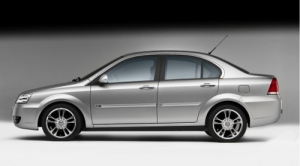Much has been made about the relatively weak sales of electric and plug-in hybrid vehicles, particularly the Chevrolet Volt. The Volt received good reviews for its pep, its seamless operation and design when it first debuted in December 2010 (http://www.nytimes.com/2010/12/26/automobiles/autoreviews/26volt.html?pagewanted=all). But then it was priced at $41,000 (before a $7,500 federal tax credit) and initially sold in only six states (California, New York, New Jersey, Texas, Connecticut and Michigan) and Washington, DC. By last March, General Motors announced it would suspend production of the Volt for five weeks because inventory had built up faster than sales.
Many electric car/plug in hybrid advocates have suggested that the real reason car buyers are not choosing these
vehicles is that they haven’t driven them. To that end, a nonprofit group called Plug In America has organized National Plug In Day on Sept. 23, a celebration taking place in 60 U.S. cities that allows people to drive these cars. Cars available for driving include the BMW ActiveE, Chevy Volt, Coda, Fisker Karma, Honda Fit EV, Mitsubishi iMiEV, Nissan Leaf, Plug In Prius, Tesla Roadster and Toyota Rav4 EV.
On Sept. 18, Pike Research issued a report tracking factors like age, race, gender and income, among other determinants, that indicate the likelihood of a North American consumer to buy a plug in electric vehicle (PEV). One of the most important indicators is geography and the report concluded that that state with the highest PEV sales for the remainder of this decade will be California. The report, titled “Electric Vehicle Geographic Forecasts,” notes that PEV sales “roughly correspond to population but other factors, including demographics, socioeconomics and public policy have a strong influence as well.” The report including an executive summary is available for free at the Pike Research website.
We last covered a random variety of small caps related to the PEV and hybrid automobile markets, including battery companies, last March. Here’s a look at what has happened to these stocks in the meantime.
Santa Rosa, CA-based ZAP (OTC: ZAAP.OB, http://www.zapworld.com/) makes a variety of all-electric vehicles including trucks, motorcycles, shuttle buses and sedans and was formerly known as ZAPWORLD.COM. Most of its business at this point is with government or military customers. Its stock has been on a gradual downturn since it sold for 90 cents in early 2011. It sold for 20 cents last March 13 with a market cap of $45.25 million. ZAAP closed Sept. 19 at $0.13. Its market cap is now $38.7 million.
Waltham, MA-based A123 Systems (Nasdaq: AONE, http://www.a123systems.com/) makes lithium ion batteries based on its proprietary Nanophosphate technology. It stock was a high flier back in the fall of 2009 when it traded for about $26 but those days are long gone. Last March 13 the stock closed at $1.69. AONE closed Sept. 19 at $0.32 cents. and market cap is now $54.4 million.
Austin, TX-based Valence Technology Inc. (Nasdaq: VLNC, http://www.valence.com/) manufacturers energy systems based on another phosphate-based lithium ion technology. Its products are used in a variety of applications in addition to all-electric vehicles, such as wheelchairs, robotics and remote power devices. VLNC stock has come way down in value from $5 in 2008. Last March it traded for 88 cents and its market cap was $150 million. VLNC closed Sept. 19 at $0.019 with a market cap of $3.2 million. It is currently facing a variety of class action shareholder lawsuits.
San Diego-based Maxwell Technologies Inc. (Nasdaq: MXWL, http://www.maxwell.com/) was formerly known as Maxwell Laboratories. The company manufactures ultracapacitors that are energy storage devices and power delivery systems for use in transportation, automotive, IT and industrial electronics, as well as microelectronic products including single board computers and high-density memory and power modules for satellites and spacecraft applications. Last March 13 MXWL stock was trading near the top of its 52-week range at $18.69 with a market cap of $522 million. The stock took a hit when management cut back on its revenue guidance in August. MXWL closed Sept. 19 at $8.54, down 31 cents for the day. Its market cap is now $249 million.
San Carlos, CA-based Tesla Motors (Nasdaq: TSLA, http://www.teslamotors.com/) manufactures the Tesla Roadster and other electric vehicles and electric powertrain components. Its market cap of $3.3 billion puts it out of our smallcap focus but its stock hit a 52-week high of $36.29 March 12, which put the stock up more than 30 percent in the past five months. By Sept. 19 it had dropped down to $31.05.


